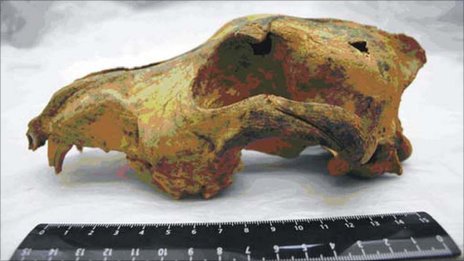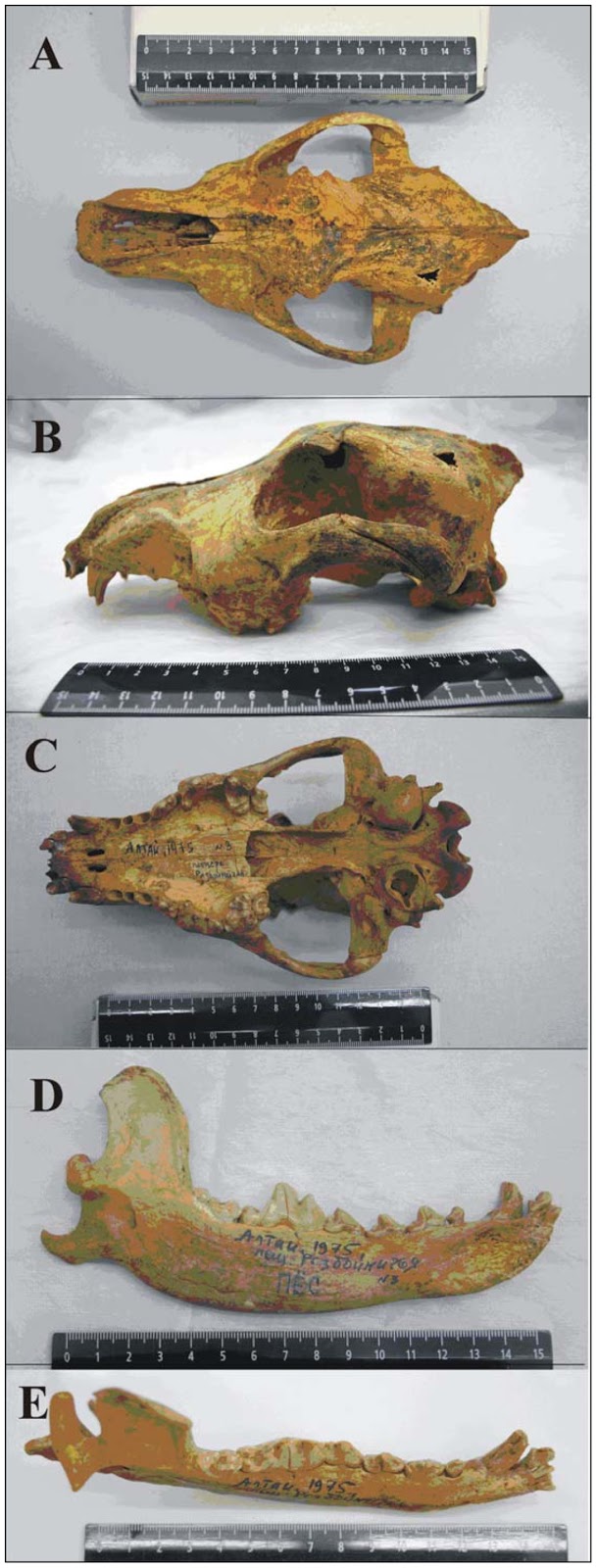

| Visitors Now: | |
| Total Visits: | |
| Total Stories: |

| Story Views | |
| Now: | |
| Last Hour: | |
| Last 24 Hours: | |
| Total: | |
33,000 Year Old Canid Bones, One Of The Earliest Known Dog Ancestors
The skull of a 33,000 year old dog-like canid used in this study was excavated from Razboinichya Cave (Altai Mountains of southern Siberia. The Siberian fossil has been revealed to be one of the oldest known domestic dogs. DNA analysis finds 33,000-year old dog ancestor was more related to modern dogs than wolves
Analysis of DNA extracted from a fossil tooth recovered in southern Siberia confirms that the tooth belonged to one of the oldest known ancestors of the modern dog, and is described in research published March 6 in the open access journal PLOS ONE by Anna Druzhkova from the Institute of Molecular and Cellular Biology, Russian Federation, and colleagues from other institutions.
Human domestication of dogs predates the beginning of agriculture about 10,000 years ago, but when modern dogs emerged as a species distinct from wolves is still unclear. Although some previous studies have suggested that this separation of domestic dogs and wolves occurred over 100,000 years ago, the oldest known fossils of modern dogs are only about 36,000 years old.
The new research published today evaluates the relationship of a 33,000 year old Siberian fossil to modern dogs and wolves based on DNA sequence. The researchers found that this fossil, named the ‘Altai dog’ after the mountains where it was recovered, is more closely related to modern dogs and prehistoric canids found on the American continents than it is to wolves.
They add, “”These results suggest a more ancient history of the dog outside the Middle East or East Asia, previously thought to be the centers where dogs originated.”

Credit: Wikipedia
The Altai mountains were home to a branch of hominids (humans) who were contemporaries of Neanderthals and of Homo Sapiens (modern humans), descended from Hominids who migrated out of Africa earlier than the Neanderthals and modern humans. The Denisova hominin, dating to 40,000 years ago, was discovered in the Denisova Cave of the Altai mountains in southern Siberia in 2008. Knowledge of the Denisovan humans derives primarily from DNA evidence and artifacts, as no complete skeletons have yet been recovered. DNA evidence has been unusually well preserved because of the low average temperature in the Denisova caves.
The Altai Mountains have been identified as being the point of origin of a cultural enigma termed the Seima-Turbino Phenomenon which arose during the Bronze Age around the start of the 2nd millennium BC and led to a rapid and massive migration of peoples from the region into distant parts of Europe and Asia.
Contacts and sources:
Jyoti Madhusoodanan
Public Library of Science
Citation: Druzhkova AS, Thalmann O, Trifonov VA, Leonard JA, Vorobieva NV, et al. (2013) Ancient DNA Analysis Affirms the Canid from Altai as a Primitive Dog. PLoS ONE 8(3): e57754. doi:10.1371/journal.pone.0057754 http://dx.plos.org/10.1371/journal.pone.0057754
Financial Disclosure: Institute of Molecular and Cellular Biology, Siberian Branch of the Russian Academy of Sciences and Russian Foundation for Basic Research grants to ASD, VAT, NVV, NO, ASG; Emil Aaltonen grant to OT. The funders had no role in study design, data collection and analysis, decision to publish, or preparation of the manuscript.
2013-03-06 16:16:04
Source: http://nanopatentsandinnovations.blogspot.com/2013/03/33000-year-old-canid-bones-one-of.html
Source:




